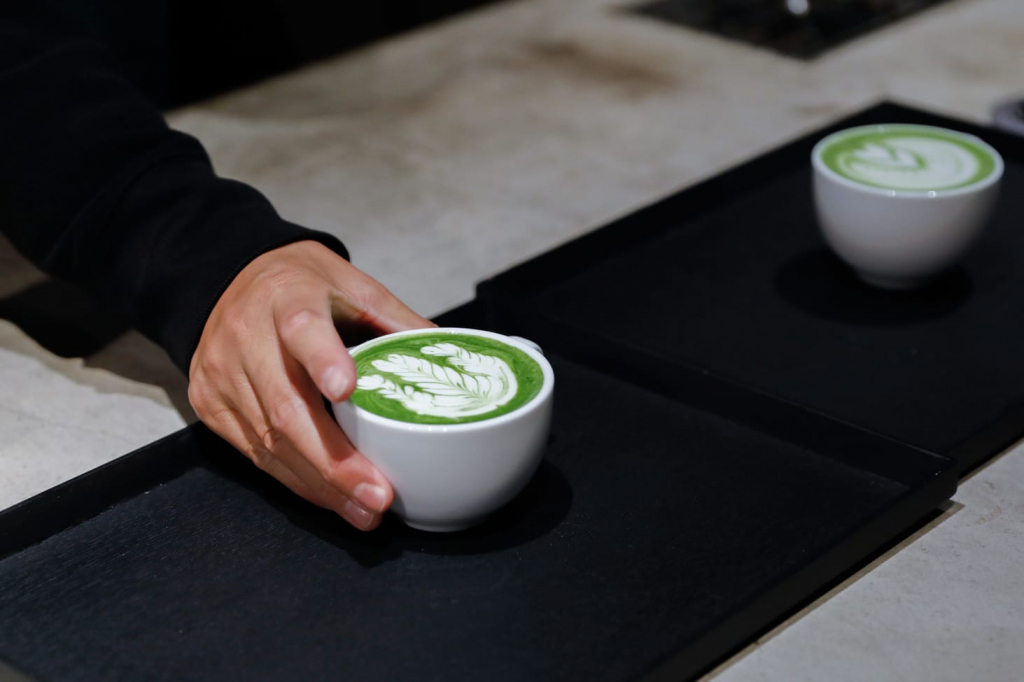Japan has made a name for itself in the latte art sphere. In the World Latte Art Championship, Japanese baristas have consistently placed in the top six and claimed two victories. There are also plenty of quirky cafés around Tokyo that boast perfectly crafted latte designs, even some with 3D latte art. With experts worried about the decline in green tea demand, bringing matcha into the latte art mix could be just what the tea farmers ordered.
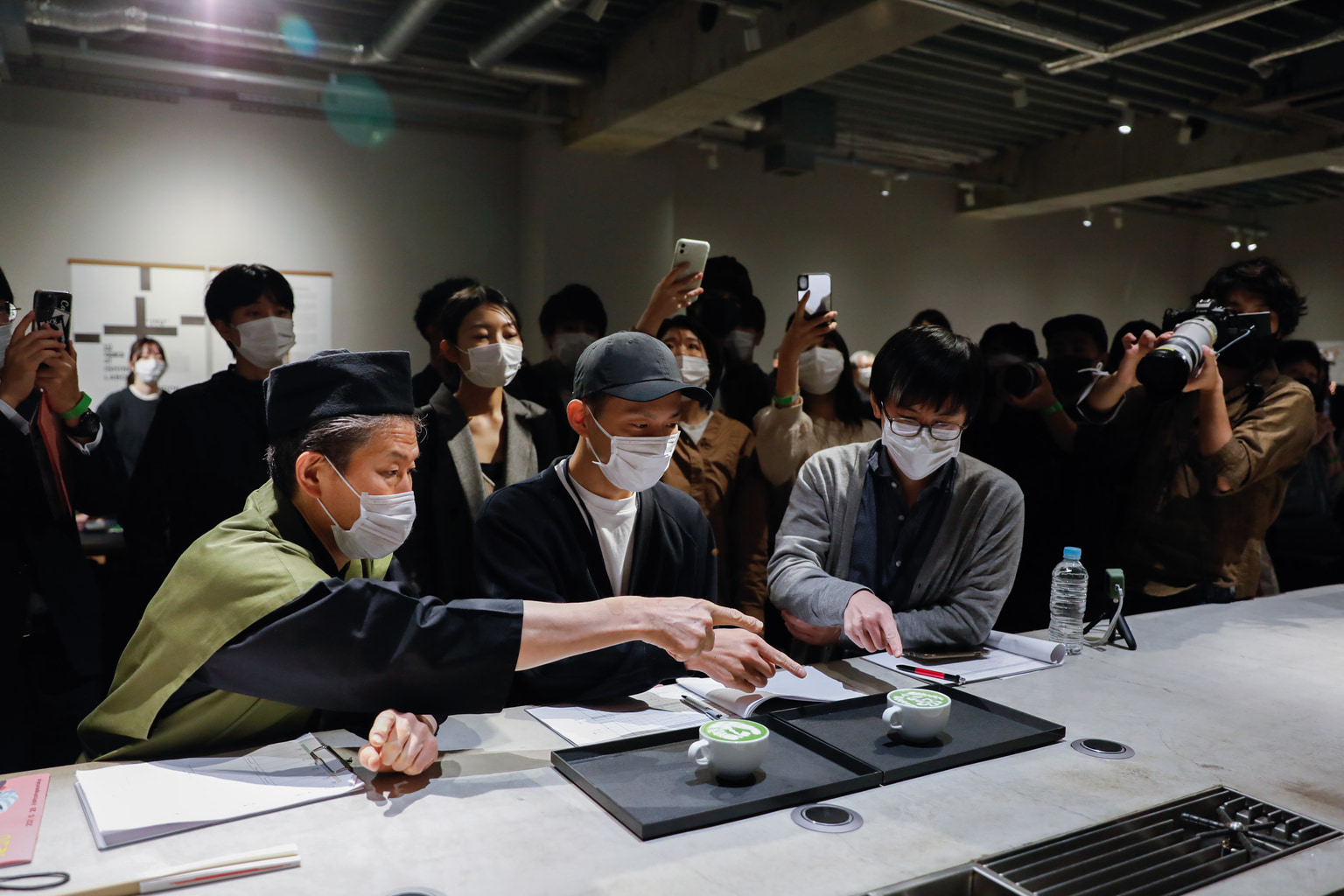
The jury deliberating
What is the Japan Matcha Latte Art Competition?
The first of its kind, the Japan Matcha Latte Art Competition opened its doors to competing baristas in 2019. The 2021 competition was the fourth and was held at dotcom space in Harajuku on October 28. With 53 applicants, it was the championship’s biggest year yet, but in the end, only eight lucky baristas were chosen to compete.
The majority of the competitors represent not countries, but cafés. They battle in pairs with qualified judges choosing their preferred matcha latte art design based on beauty, clarity, color, creativity and difficulty. However, in a climactic final, the pivotal vote belongs to the audience.
The rules are simple. The baristas must free-pour (no stencils or frothing allowed) and create the desired pattern simply from pouring steamed milk from jug to mug. It all rests on the barista’s technical abilities, forgoing reliance on machinery. They get a specified amount of water and award-winning Uji matcha from Kyoto, but what they do with that is up to them.
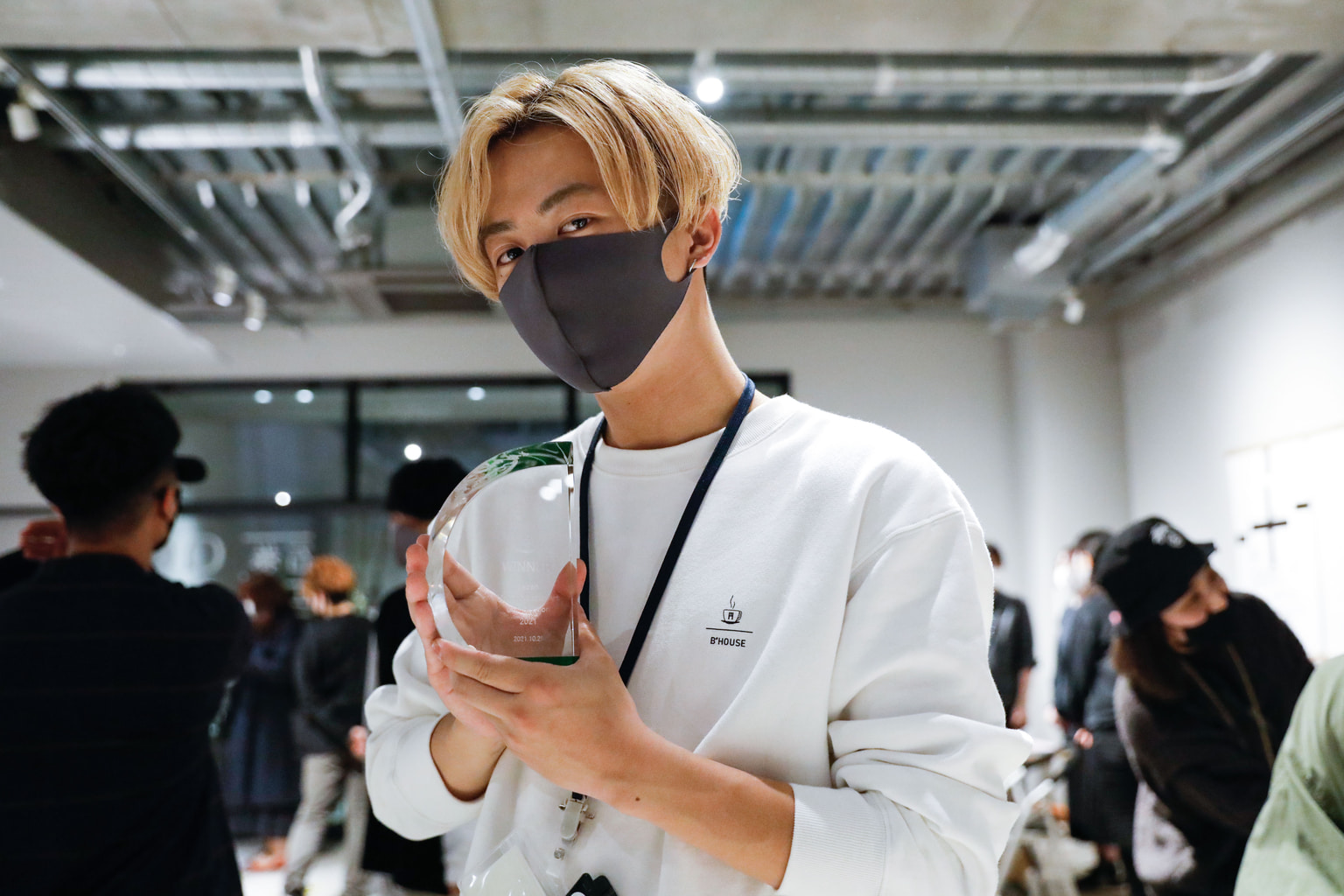
The winner of the 2021 competition, Yuki Matsumoto, holding his trophy.
Introducing Yuki Matsumoto, The 2021 Winner
The audience’s deciding choice was Yuki Matsumoto who wowed spectators with his original three-winged swan design. With over 5,000 followers on Instagram and his own café, Moja’s Café (part of a shared commercial-use kitchen called Hatch Hanare) Matsumoto spoke to us about his win, methods and thoughts on the growing world of latte art.
According to Matsumoto, or his favored moniker Moja, it was important to research various combinations of matcha powder and hot water in advance. “I did this so I wouldn’t reuse the works of previous tournaments so I could make a unique design,” he told us.
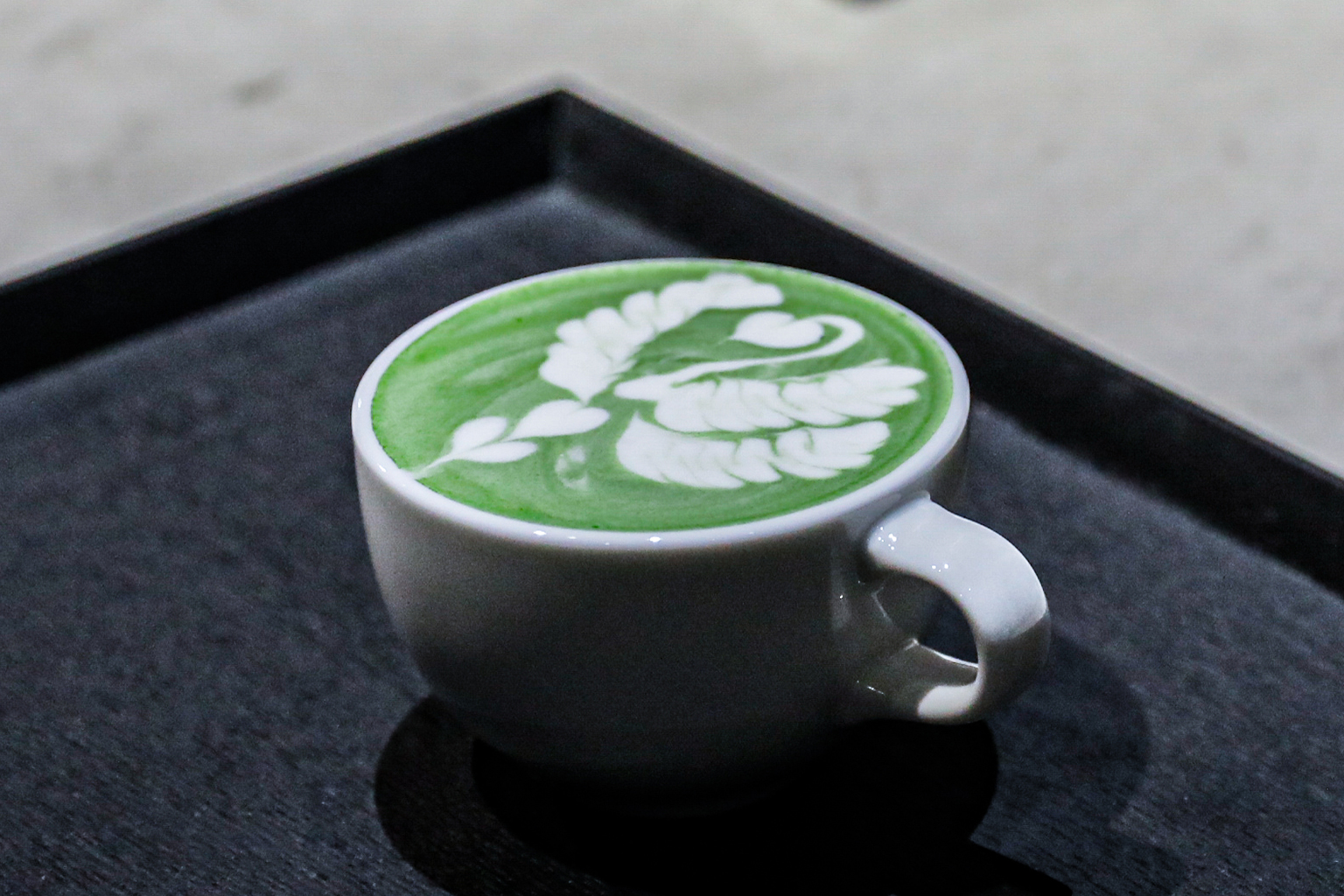
Matsumoto’s winning brew: a three-winged swan, nicknamed “Moja Swan” after himself.
Head-to-head: Espresso Latte Art vs. Matcha Latte Art
Of course, coffee and matcha have as many differences as they do similarities. While both leave a bitter taste, their densities and appearances vary. Matcha’s thickness is dependent on how much water and powder is used, which creates koicha (thick tea) or usucha (thin tea). On the other end, espresso contains oil and crema, the glorious brown foam that crowns a cup.
To make latte art, the brewer must be knowledgeable about these elemental changes as they all impact how the steamed milk reacts to the surface when poured — your envisioned masterpiece could easily turn into a garish smudge if you aren’t steady with your hand.
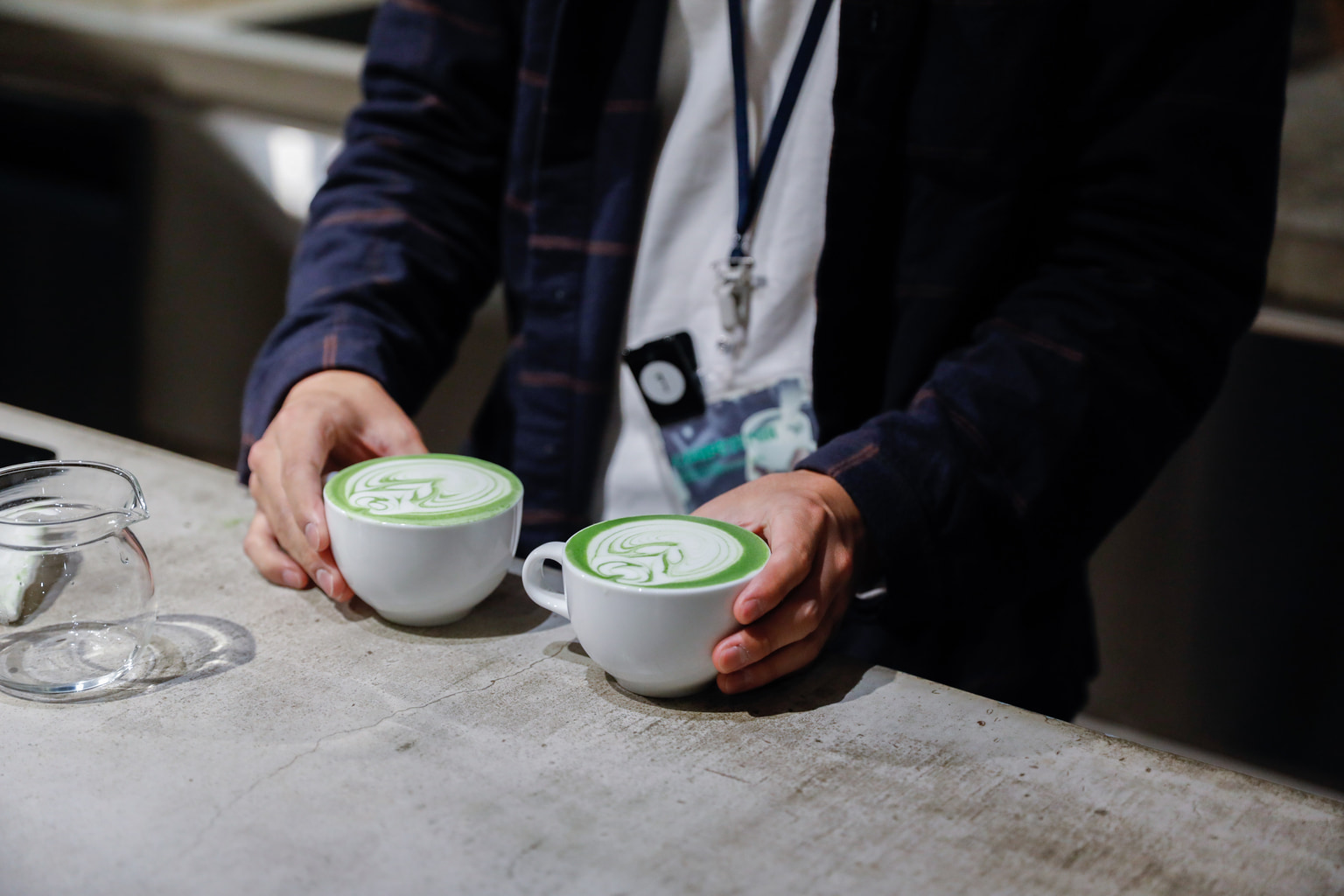
This is all the more difficult when it comes to matcha because you have to process and grind the powder yourself, as opposed to using an espresso machine. Matsumoto explains the process.
“First, you lighten the powder through a tea strainer. Then add an appropriate amount of hot water at around 90 degrees. Then steam the milk and pour,” he says, making it sound so easy.
When I asked which kind of latte art he preferred, espresso or matcha, Matsumoto was very diplomatic.
“I think that the comfort of drawing is different because both have different ingredients,” says last year’s champion. “However, since espresso latte art is well known, I think matcha is more unusual.”
The Future of Latte Art
We have espresso and matcha, but we could be seeing more latte art with never-before-seen colors and canvases. Take Matsumoto’s black latte as an example.
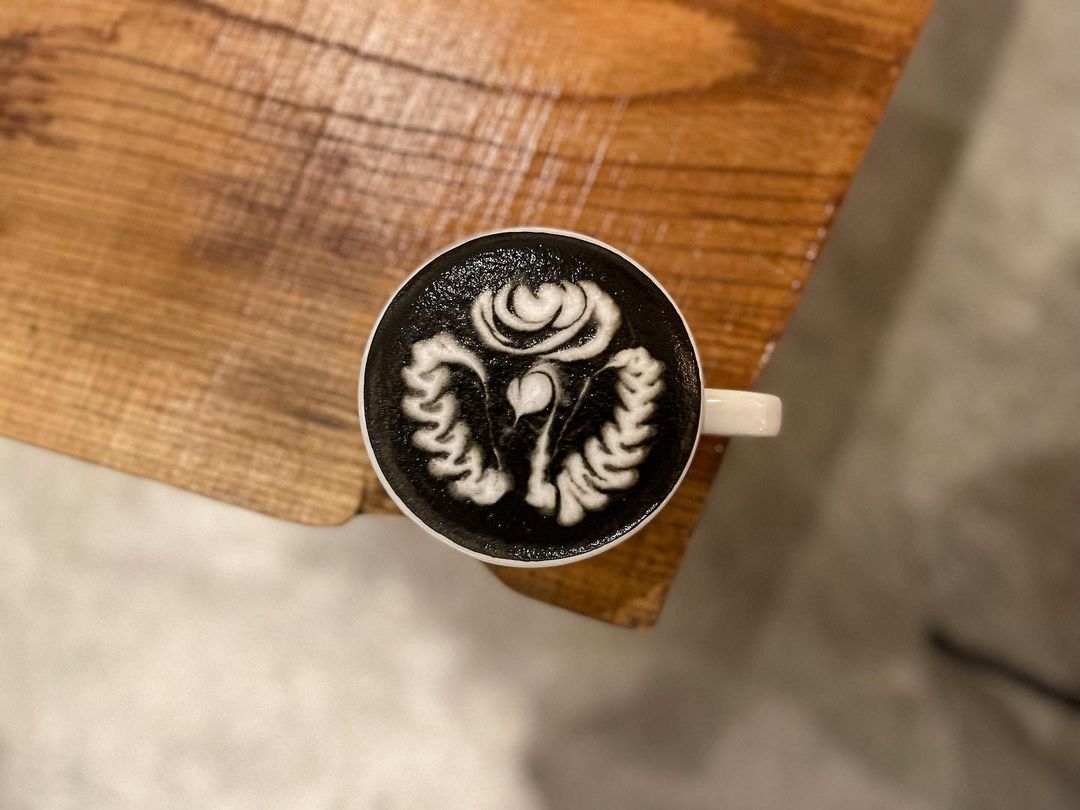
Photo courtesy of Yuki Matsumoto
On the question of whether matcha latte art will gain more traction, Matsumoto is certain.
“Yes, especially overseas,” he says. “Because matcha itself is unusual there, so I believe it will grow through latte art. Of course, I will do my best to contribute too. I think that each person has their own interest in coffee and one of those interests is enjoying it visually. I’m sure there are still more ways to express ideas.”
Follow Matsumoto on Instagram and stay tuned for the Japan Matcha Latte Art Competition in 2022. Maybe you can join the event and vote for the next matcha latte art champion.
All photos by Shota Matsushima, unless indicated otherwise. Courtesy of Japan Matcha Latte Art Competition.

